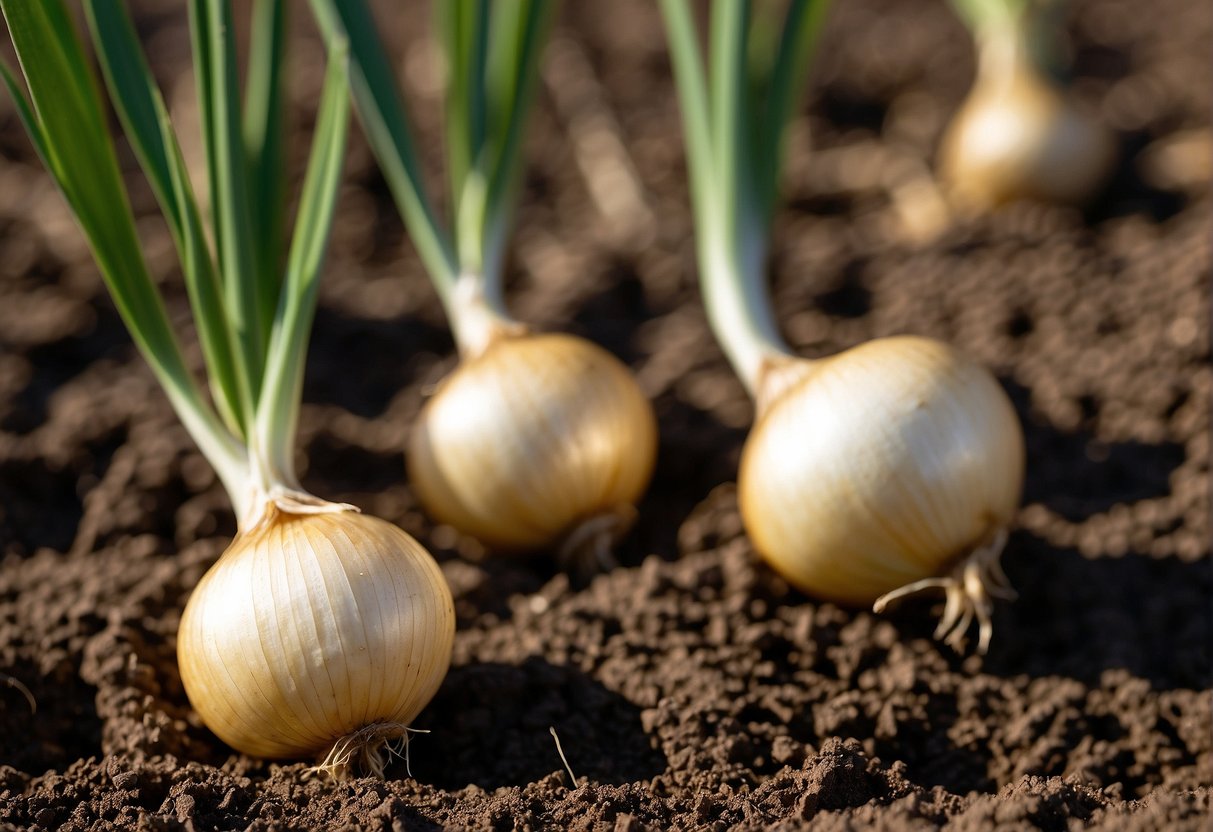Walla Walla onions, known for their sweet and mild flavor, are a gardener’s delight. I find great satisfaction in growing these large, non-pungent onions that add a gourmet touch to salads, sandwiches, and many dishes. Cultivating Walla Walla onions requires attentive care, but the rewards of harvesting these succulent bulbs are well worth the effort. Through personal experience, I’ve come to appreciate their particular needs from soil conditions to sunlight exposure.

The process starts with choosing an appropriate location for planting. Walla Walla onions thrive best in full sun; therefore, selecting a spot that receives at least six hours of sunlight daily is crucial. Soil quality is another fundamental aspect to consider. I make sure that the soil is well-drained and has a pH level between 6.0 and 7.0, as it provides the best environment for the onions to grow. InputDecoration
JUMP TO TOPIC
Selecting the Ideal Location
I always emphasize to fellow gardeners that the right location is critical for the success of growing Walla Walla onions. They need a spot that gets ample sunshine and has soil with good drainage to prevent any waterlogging.
Understanding Sunlight and Soil Needs
For Walla Walla onions to flourish, a minimum of 6-8 hours of full sun exposure daily is essential. They are a cool-season crop, but adequate sunlight is vital to their growth.
Choose a garden spot with a direct, unfiltered sunlight window of at least 6-8 hours to support the energetic growth of Walla Walla onions.
Soil quality is equally vital. Walla Walla onions thrive in well-drained soil, with a pH level ideally between 6.0 to 7.0. The soil must be rich in organic matter to nourish the onions as they grow.
Choosing the Right Time for Planting
Planting time is crucial to evade the extremes. In spring, once the soil temperature is above 50°F and the risk of hard frost has passed, it’s safe to plant. Walla Walla onions can also be planted in early fall in areas where the ground doesn’t freeze over the winter.
💥 Key Planting Times
Spring: Ensure soil is at least 50°F. Early fall: Ideal for regions without harsh winter ground freeze.
Taking into account your local climate is important; Walla Walla onions are a cool-season crop, meaning they grow actively during the cool parts of the year but take care to avoid planting too close to a period when a hard frost is likely. Timing is everything to achieve a bountiful harvest.
Planting Walla Walla Onions
I find success in planting Walla Walla onions by carefully preparing the soil, sowing seeds or transplanting sets at the appropriate time, and maintaining consistent care throughout their growth.
Preparing Soil and Fertilization
When I get ready to plant Walla Walla onions, I ensure the soil is well-prepared. Good drainage is vital to prevent waterlogging and discourage pests. I typically work organic matter, such as compost or aged manure, into the soil to improve its fertility and structure. Then, to give the onions the nutrients they need, I mix in a balanced fertilizer. A pH level between 6.0 and 7.0 is ideal for these onions, so I sometimes test the soil and adjust it if necessary.
Sowing Seeds and Transplanting Sets
For planting Walla Walla onion seeds, I start them indoors about 8-10 weeks before the last frost date. This gives them a good head start. Once the seedlings are a few inches tall or the soil outside warms to at least 40°F (4°C), it’s time to transplant the sets. I plant them 1 inch deep, maintaining a spacing of 4 to 6 inches between plants to ensure enough room for growth. For better organization and easier weeding, I place them in rows.
Maintenance for Optimal Growth
Consistent moisture is necessary for onions to develop well. I give them a thorough watering immediately after planting and keep the soil moist but not soggy, especially important during the dry spells of the growing season.
After planting, keeping weeds at bay is crucial since they can compete with young onions for nutrients. I gently hand weed and avoid disturbing the onion’s shallow root system. Fertilizing is also necessary for maintaining vigorous growth. I apply a balanced fertilizer every few weeks, following the manufacturer’s directions. Regular checks for pests are also a part of my routine, taking action if necessary to prevent damage to my crop.
Harvesting and Storing Walla Walla Onions
When the time comes to harvest and store Walla Walla onions, recognizing the signs of maturity is vital for a bountiful harvest that can last for months. Proper harvesting and storage techniques help maintain quality and freshness.
Recognizing the Signs of Maturity
Onions signal readiness for harvest when their tops begin to fall over and yellow. This typically occurs 90 to 110 days after planting.
Proper Techniques for Harvesting
Using a garden fork, gently lift the bulbs out of the soil to avoid bruising. Ensuring at least 1 inch of stem remains on the bulb will help in reducing the risk of diseases during storage.
Long-Term Storage Strategies
After harvesting, leave the onions to cure on a dry surface for several days. Then, move them to a cool, dry place with good air circulation, like a pantry or garage shelf, keeping the temperature consistently near 40°F (4°C).
| Storage Location | Temperature | Humidity | Shelf Life |
|---|---|---|---|
| Pantry or Garage | 40°F (4°C) | Low | Several Months |
Preventing Pests and Diseases
Regularly inspect stored onions for signs of spoilage or pests. Use insecticidal soap or neem oil as a preventative measure on the crops. Employ row covers in the garden to protect onions from insects.
💚 Cleanliness Tip: Keep storage areas dry and well-ventilated to deter pest infestations and mold growth on bulbs.












